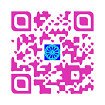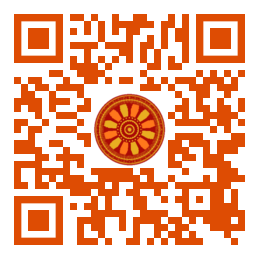
:: International Transaction Journal of Engineering, Management, & Applied Sciences & Technologies
http://TuEngr.com

ISSN 2228-9860
eISSN 1906-9642
CODEN: ITJEA8
FEATURE PEER-REVIEWED ARTICLE
Vol.13(5)(2022) |
Tackling the Pandemic: A Knowledge Management Perspective
 Mahmoud Ibrahim Fallatah (Department of Business Administration, College of Business, Umm Al-Qura University, SAUDI ARABIA).
Mahmoud Ibrahim Fallatah (Department of Business Administration, College of Business, Umm Al-Qura University, SAUDI ARABIA).
Disciplinary: Management, Knowledge Management, Crisis Management, Technology and Innovation.
doi: 10.14456/ITJEMAST.2022.88
Keywords:Coronavirus, COVID-19, Knowledge sharing, Knowledge creation, Knowledge acquisition, Crisis management
AbstractThe current coronavirus pandemic represents a huge challenge for nations and organizations around the world. The present paper discusses how knowledge management could be applied to guide organizations during such a traumatic event. Specifically, building upon the Mitroff's model of crisis management, the paper asserts that the acquisition, creation, sharing, utilization, and storing of knowledge are essential for organizations as they deal with the pandemic. The paper suggests some required organizational, team, and individual requirements that, when appropriately available, should help organizations in their knowledge management efforts.Paper ID: 13A5D
Cite this article:
Fallatah, M.I. (2022). Tackling the Pandemic: A Knowledge Management Perspective. International Transaction Journal of Engineering, Management, & Applied Sciences & Technologies, 13(5), 13A5D, 1-11. http://TUENGR.COM/V13/13A5D.pdf DOI: 10.14456/ITJEMAST.2022.88
References
- Abdolshah, M., & Abdolshah, S. (2011). Barriers to the implementation of knowledge management in Iranian institutions. International Transaction Journal of Engineering, Management, & Applied Sciences & Technologies, 2(2), 173-182.
- Alavi, M., & Leidner, D. E. (2001). Knowledge management and knowledge management systems: Conceptual foundations and research issues. MIS Quarterly, 25(1), 107-136.
- Alfaro, L., Chari, A., Greenland, A. N., & Schott, P. K. (2020). Aggregate and firm-level stock returns during pandemics, in real time (No. w26950). National Bureau of Economic Research.
- Al-Hashem, A.O., Almasri, A., Abu Orabi, T. (2021). The mediation role of the organizational memory in the relationship between knowledge capturing and learning organization. Cogent Business & Management, 8(1), (1924933.
- Baker, S. R., Bloom, N., Davis, S. J., & Terry, S. J. (2020). Covid-induced economic uncertainty (No. w26983). National Bureau of Economic Research.
- Barney, J.1991. Firm resources and sustained competitive advantage. Journal of Management, 17, 99-120.
- Bartik, A. W., Bertrand, M., Cullen, Z. B., Glaeser, E. L., Luca, M., & Stanton, C. T. (2020). How are small businesses adjusting to covid-19? early evidence from a survey (No. w26989). National Bureau of Economic Research.
- Bontis, N., Keow, W. C. C., & Richardson, S. (2000). Intellectual capital and business performance in Malaysian industries. Journal of Intellectual Capital, 1(1), 85-100.
- Bouty, I. (2000. Interpersonal and interaction influences on informal resource exchanges between R&D researchers across organizational boundaries. Academy of Management Journal, 43: 50-65.
- Cabrera, E. F., & Cabrera, A. (2005). Fostering knowledge sharing through people management practices. The international Journal of Human Resource Management, 16(5), 720-735.
- Carmeli, A., & Schaubroeck, J. (2008). Organisational crisis-preparedness: The importance of learning from failures. Long Range Planning, 41(2), 177-196.
- Cohen, W. M., & Levinthal, D. A. (1990). Absorptive capacity: A new perspective on learning and innovation. Administrative Science Quarterly, 35(1), 128-152.
- Constant, D., Kiesler, S., & Sproull, L. (1994). What's mine is ours, or is it? A study of attitudes about information sharing. Information Systems Research, 5(4), 400-421.
- Darroch, J. (2003). Developing a measure of knowledge management behaviors and practices. Journal of Knowledge Management, 7(5), 41-54.
- Dwivedi, Y. K., Hughes, D. L., Coombs, C., Constantiou, I., Duan, Y., Edwards, J. S., ... & Upadhyay, N. (2020). Impact of COVID-19 pandemic on information management research and practice: Transforming education, work and life. International Journal of Information Management, 55, 102211.
- Dyer, J. H., & Singh, H. (1998). The relational view: Cooperative strategy and sources of interorganizational competitive advantage. Academy of Management Review, 23(4), 660-679.
- Edvinsson, L., & Malone, M. S. (1997). Intellectual Capital: Realizing Your Company's True Value by Finding Its Hidden Brainpower. Harper Business, New York, NY.
- Fallatah, M. I. (2018). Does value matter? An examination of the impact of knowledge value on firm performance and the moderating role of knowledge breadth. Journal of Knowledge Management, 22(3), 678-695.
- Fallatah, M. I. (2020). Networks, knowledge, and knowledge workers' mobility: evidence from the National Basketball Association. Journal of Knowledge Management, 25(5), 1387-1405.
- Fleming, L. (2001). Recombinant uncertainty in technological search. Management Science, 47: 117-132.
- Garcia, H. F. (2006). Effective leadership response to crisis. Strategy & Leadership, 34(1), 4-10.
- Grant, R. M. (1996). Toward a knowledge?based theory of the firm. Strategic Management Journal, 17(S2), 109-122.
- He, W., Zhang, Z. J., & Li, W. (2021). Information technology solutions, challenges, and suggestions for tackling the COVID-19 pandemic. International Journal of Information Management, 57, 102287.
- Hendryadi, Suratna, Suryani, & Purwanto, B. (2019). Bureaucratic culture, empowering leadership, affective commitment, and knowledge sharing behavior in Indonesian government public services. Cogent Business & Management, 6(1), 1680099.
- Huber, G. P. (1991). Organizational learning: The contributing processes and the literatures. Organization Science, 2(1), 88-115.
- Kogut, B., & Zander, U. (1996). What firms do? Coordination, identity, and learning. Organization Science, 7(5), 502-518.
- Lane, P. J., & Lubatkin, M. (1998). Relative absorptive capacity and interorganizational learning. Strategic Management Journal, 19(5), 461-477.
- McFadyen, M. A., & Cannella Jr, A. A. (2004). Social capital and knowledge creation: Diminishing returns of the number and strength of exchange relationships. Academy of Management Journal, 47, 735-746.
- Mitroff, I. I. (1994). Crisis management and environmentalism: A natural fit. California Management Review, 36(2), 101-113.
- Mitroff, I. I., Shrivastava, P., & Udwadia, F. E. (1987). Effective crisis management. Academy of Management Perspectives, 1(4), 283-292.
- Nahapiet, J., & Ghoshal, S. (1998). Social capital, intellectual capital, and the organizational advantage. Academy of Management Review, 23(2), 242-266.
- Nelson, R., & Winter, S. (1982). An evolutionary theory of economic change. Cambridge, MA: Belknap.
- Nonaka, I. (1994). A dynamic theory of organizational knowledge'. Organization Science, 5(1), 14- 37.
- Nonaka, I., & Takeuchi, H. (1995). The knowledge-creating company: How Japanese companies create the dynamics of innovation. Oxford University Press, New York.
- Oluikpe, P. I. (2015). Knowledge creation and utilization in project teams. Journal of Knowledge Management, 19(2), 351-371.
- Pan, S. L., Cui, M., & Qian, J. (2020). Information resource orchestration during the COVID-19 pandemic: A study of community lockdowns in China. International Journal of Information Management, 54, 102143.
- Pauchant, T. C., & Mitroff, I. I. (1992). Transforming the crisis-prone organization: Preventing individual, organizational, and environmental tragedies. Jossey-Bass, San Fransisco.
- Pearson, C. M., & Mitroff, I. I. (1993). From crisis prone to crisis prepared: A framework for crisis management. Academy of Management Perspectives, 7(1), 48-59.
- Pearson, C. M., & Clair, J. A. (1998). Reframing crisis management. Academy of Management Review, 23(1), 59-76.
- Polanyi, M. (1962). Tacit knowing: Its bearing on some problems of philosophy. Reviews of Modern Physics, 34(4), 601.
- Polanyi, M. (1966). The tacit dimension. Garden City, NY: Doubleday.
- Robertson, J., McCarthy, I. P., & Pitt, L. (2019). Leveraging social capital in university-industry knowledge transfer strategies: a comparative positioning framework. Knowledge Management Research & Practice, 17(4), 461-472.
- Roos, J., Edvinsson, L., & Dragonetti, N. C. (1997). Intellectual capital: Navigating the new business landscape. Springer, UK.
- Rosenkopf, L., & Nerkar, A. (2001). Beyond local search: boundary?spanning, exploration, and impact in the optical disk industry. Strategic Management Journal, 22(4), 287-306.
- Schumpeter, J. A. (1934). The Theory of Economic Development. Cambridge, MA: Harvard University Press.
- Serenko, A., & Dumay, J. (2017). Citation classics published in knowledge management journals. Part III: author survey. Journal of Knowledge Management, 21(2), 330-354.
- Sipior, J. C. (2020). Considerations for development and use of AI in response to COVID-19. International Journal of Information Management, 55, 102170.
- Sveiby, K. E. (1997). The new organizational wealth: Managing & measuring knowledge-based assets. Berrett-Koehler Publishers, San Francisco, CA.
- Wang, W. T., & Belardo, S. (2005). Strategic integration: A knowledge management approach to crisis management. In Proceedings of the 38th Annual Hawaii International Conference on System Sciences (pp. 252a-252a). IEEE.
- Walsh, J. P., & Ungson, G. R. (1991). Organizational memory. Academy of Management Review, 16(1), 57-91.
- Wang, J. (2016). Knowledge creation in collaboration networks: Effects of tie configuration. Research Policy, 45, 68-80.
- Wang, S., & Noe, R. A. (2010). Knowledge sharing: A review and directions for future research. Human Resource Management Review, 20(2), 115-131.
- Zack, M., McKeen, J., & Singh, S. (2009). Knowledge management and organizational performance: an exploratory analysis. Journal of Knowledge Management, 13, 392-409.
- Zahra, S. A., & George, G. (2002). Absorptive capacity: A review, reconceptualization, and extension. Academy of Management Review, 27(2), 185-203.
Other issues:
Vol.13(4)(2022)
Vol.13(3)(2022)
Vol.13(2)(2022)
Archives
Call-for-Papers
Call-for-Scientific PapersCall-for-Research Papers: ITJEMAST invites you to submit high quality papers for full peer-review and possible publication in areas pertaining engineering, science, management and technology, especially interdisciplinary/ cross-disciplinary/ multidisciplinary subjects.
To publish your work in the next available issue, your manuscripts together with copyright transfer document signed by all authors can be submitted to Editor @ TuEngr.com (please see all detail from Instructions for Authors)
Publication and peer-reviewed process:
After the peer-review process, articles will be on-line published in the available next issue. However, the International Transaction Journal of Engineering, Management, & Applied Sciences & Technologies cannot guarantee the exact publication time as the process may take longer time, subject to peer-review approval and adjustment of the submitted articles.